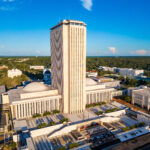In the three years since the Fukushima disaster, Japan’s utilities have pledged $15 billion to harden their nuclear plants against earthquakes, tsunamis, tornadoes and terrorist attacks.
But as Japan’s nuclear safety regulator prepares to rule on whether the first of the country’s 48 idled reactors is ready to be come back online, the post-Fukushima debate about how safe is safe enough has turned to a final risk: volcanoes.
The Nuclear Regulation Authority (NRA) has already said the chance of volcanic activity during the lifespan of Kyushu Electric Power’s nuclear plant at Sendai was negligible, suggesting it will give it the green light. The plant, some 1,000 km (600 miles) south of Tokyo, lies in a region of active volcanic sites.
Critics, including some scientists who were consulted by the NRA, say that shows regulators are turning a blind eye to the kind of unlikely but potentially devastating chain of events that pushed the Fukushima Daiichi plant into a triple meltdown in 2011 when a tsunami crashed into the facility.
The debate has played out in several months of public hearings in Tokyo by the NRA and could weigh on the last hurdle for restarting nuclear plants – the opinion of local residents – at a time when the costs of keeping reactors shut are mounting.
While reactors have been offline, Japan has had to spend around $87 billion on replacement fuel, utility operators estimate. Before 2011, Japan got about 30 percent of its electricity from nuclear power.
Kyushu Electric’s business plan hinges on getting its two-reactor facility at Sendai restarted. The utility has posted $5.9 billion in losses over the past three years and is seeking a $1 billion bailout in new equity from the Development Bank of Japan.
Critics say the NRA safety review overestimates the power of science to predict future volcanic eruptions.
Japan lies on the “Ring of Fire”, a horseshoe-shaped band of fault lines and volcanoes circling the edges of the Pacific Ocean. Japan itself is home to 110 active volcanoes.
Sendai, at the southern end of the island of Kyushu, is 50 km (31 miles) from Sakurajima, an active volcano. Five giant calderas, crater-like depressions formed by past eruptions, are also in the region, the closest one just 40 km (25 miles) from the Sendai plant.
“No-one believes that volcanic risks have been adequately discussed,” said Setsuya Nakada, a professor of volcanology at the University of Tokyo, who advised officials when they were forming regulatory guidelines for monitoring volcanoes.
Eruptions that form calderas are devastating, but extremely rare. Scientists believe the odds of a massive caldera-forming eruption happening in Japan are less than 1 in 10,000 in any given year.
Evidence of the most recent mega-eruption in southern Japan is the underwater Kikai caldera, which was formed by a violent eruption around 7,300 years ago. The eruption covered southern Kyushu with more than 60 centimeters of ash.
HOLLYWOOD SCRIPT
At times, the catastrophic scenarios that have been floated in debating the safety of Sendai before the NRA have sounded like a plot-line from a Hollywood disaster movie.
In one model presented by Kyushu Electric, an eruption similar to one 12,000 years ago would cover the Sendai facility with 15 centimeters of ash and block roads. The utility said it would be able to clear the ash and Sendai could still function.
Kyushu Electric also said it would install new monitoring equipment around nearby calderas and develop plans to remove highly radioactive fuel to a safer site if the threat of an eruption is detected.
But Toshitsugu Fujii, the head of the Japan Meteorological Agency’s volcanic eruption monitoring committee and honorary professor of volcanology at the University of Tokyo, said there was no demonstrated way to predict eruptions.
“It wouldn’t be surprising for any part of Japan to experience earthquakes or volcanic eruptions at any time. The question is when, and we don’t have the technology to predict that,” Fujii told Reuters.
The NRA is less concerned.
“Our judgment is that it is unlikely that a destructive eruption would occur in the next 30 to 40 years,” NRA Chairman Shunichi Tanaka told reporters last week.
As soon as the NRA clears the Sendai nuclear plant for restart, local townships closest to the facility will hold public hearings. The government has said it will defer to the prefecture and the host city to make the final decision.
Charles Connor, a professor at the University of South Florida’s School of Geosciences, said the risk of a caldera-forming eruption near the Sendai plant was “very low on the time scale of the human experience”.
“If we can draw something from the Fukushima tragedy it is that dialog has to develop between scientists and regulators so citizens can understand risk and reach a balanced decision on what is acceptable,” he said.





















 Diversification, Risk Modeling Top of Mind for Carriers as Cyber Market Softens
Diversification, Risk Modeling Top of Mind for Carriers as Cyber Market Softens  Loss Uncertainty High Amid ‘Rapid Softening’: Liberty Mutual Exec
Loss Uncertainty High Amid ‘Rapid Softening’: Liberty Mutual Exec  Lawsuit Alleges Girl Scouts’ Cookies Contain Heavy Metals, Pesticides
Lawsuit Alleges Girl Scouts’ Cookies Contain Heavy Metals, Pesticides  Investigations to Legislation: Florida Lawmakers Weighing Insurance Industry Changes
Investigations to Legislation: Florida Lawmakers Weighing Insurance Industry Changes 



